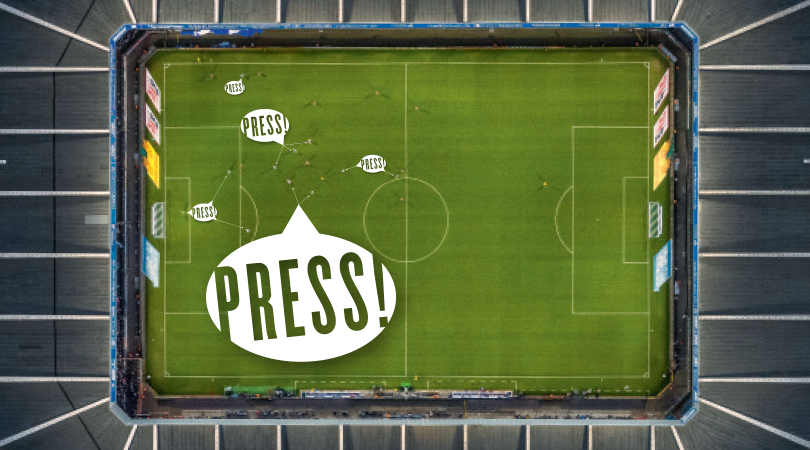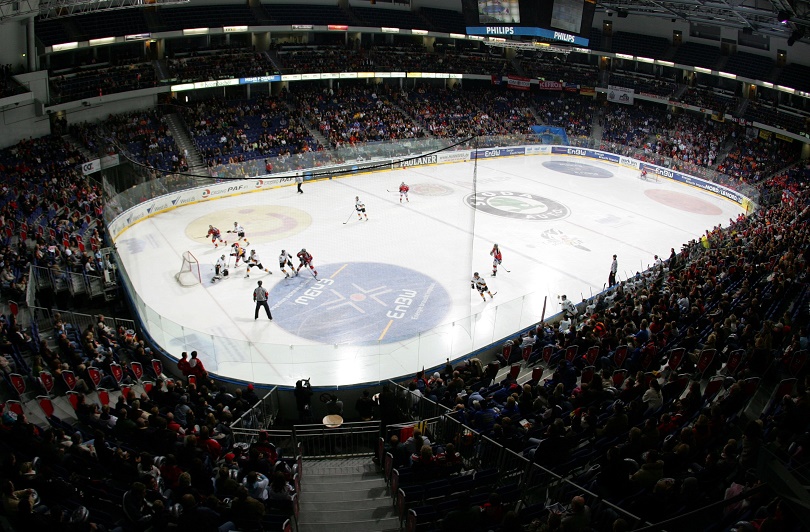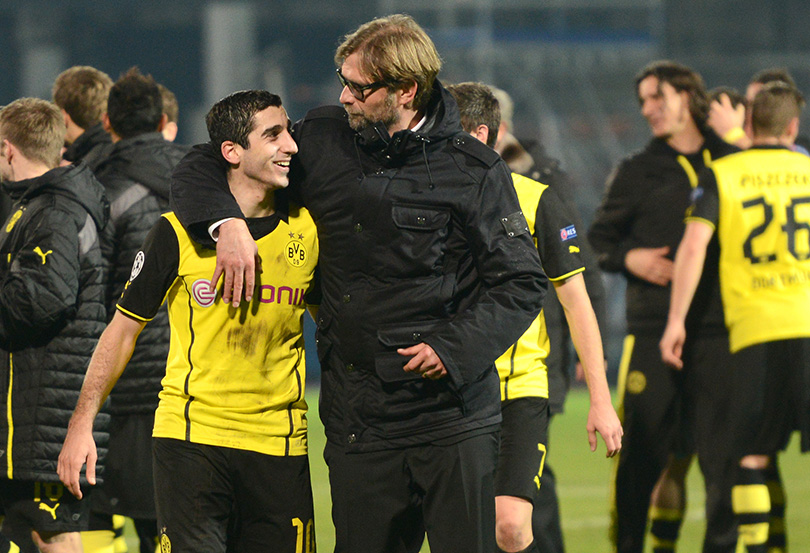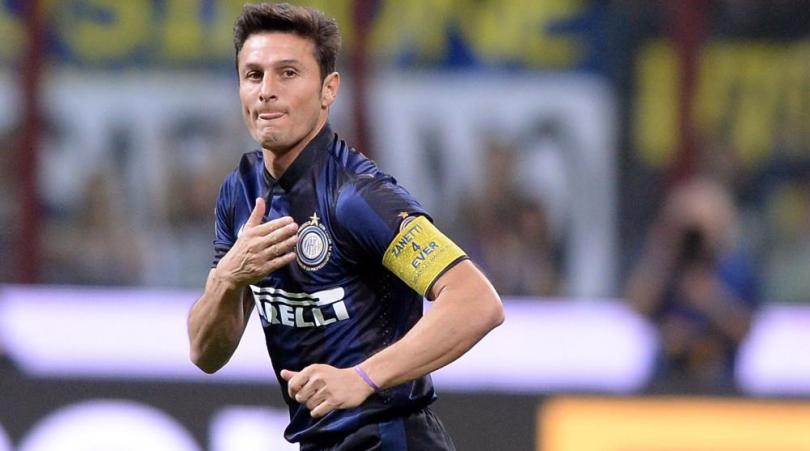Who REALLY invented the pressing game – and why it works
Everybody talks about it, from confused TV pundits to bluffing pub bores – but where did pressing come from in the first place? Uli Hesse has the answers...

In 1934, a sportswriter-turned-coach by the name of Thomas Patrick Gorman had an idea. Since time immemorial, teams had followed a natural impulse when not in possession: they retreated to protect their own goal against an attack. What would happen, Gorman wondered, if they did the opposite? What if they surged forward and put such pressure on their opponents that they couldn’t even mount an attack in the first place?
Gorman told his forwards to aggressively bear down on opposing players who were trying to build from the back. One forward would challenge the player in possession near his own goal, while the others blocked the passing lanes. Gorman then instructed his defenders to advance and position themselves in the middle of the field of play in order to intercept a rushed pass or block the path of an opponent who had somehow managed to wind his way through the web built by the forwards.
Gorman’s men scratched their heads. It sounded suicidal. If one of them failed to do his job, the opposition would be left with an open field ahead of them. And even if every player did manage to fulfil his duties, a group of nimble and technically astute defenders could escape the stranglehold with a series of quick, short passes. We don’t know how Gorman convinced his team. Maybe he told them that nimble and technically astute players didn’t tend to be defenders.

It took his side some time to come to grips with the new tactic. They lost four of their next five matches. But then something clicked, and Gorman’s team turned into a machine. “We steam-rollered our opponents and wore them down,” the 47-year-old Canadian explained. Three days earlier, his team had won the league for the first time ever.
Forechecking
The name of this league was the National Hockey League, and the team was the Chicago Blackhawks. The title that the ice hockey coach gave his tactic was ‘forechecking’. He told reporters that “the forechecking won the championship. Instead of backing out of the enemy zone, the Blackhawks kept charging in. The system worked better than expected.”
Eight decades later, Gorman’s innovation is on the lips of almost everybody in English football – only not as ‘forechecking’. What everyone is talking about these days is ‘pressing’. The reason this tactical ploy is suddenly all the rage is pretty obvious: Mauricio Pochettino, Jurgen Klopp and Pep Guardiola have used it to great effect in the Premier League with Tottenham, Liverpool and Manchester City respectively, and each are fond of talking about it. Far less obvious is the exact nature of what they’re talking about.
Get FourFourTwo Newsletter
The best features, fun and footballing quizzes, straight to your inbox every week.
Before their teams met at White Hart Lane in October 2015, Pochettino said his own pressing game was different to the one Klopp had used in the Bundesliga with Borussia Dortmund, which the Argentine referred to as a “medium block”.
However, in Germany Klopp is closely associated with only a certain form of pressing: gegenpressing – or, literally, counter-pressing. To complicate matters further, many of Klopp’s fellow coaches back home would refer to Pochettino’s system not as pressing but as – get this – forechecking. It’s all so confusing that you can almost empathise with Harry Redknapp. Once asked for his views on the tactical trend, he scoffed: “All this stuff about pressing is nonsense – it’s nothing new. All teams who are successful have to work hard.”
Old or new?
It wasn’t until the 1974 World Cup that Gorman’s aggressive forechecking was successfully transferred to top-level football
There was some truth to Redknapp’s rebuttal, just not the bit about working hard. Pressing is not the same as ‘putting a shift in’ or ‘covering every blade of grass’, although most forms of the tactic do require a lot of movement from the players. Where ’Arry was right was when he said it was nothing new.
While observers had noted how effective forechecking was in ice hockey, it seemed impossible to implement something similar in football. After all, football has twice as many outfield players, and the playing surface is almost twice as long and three times as wide, which means the under-pressure defender has too many options (including playing the ball over the heads of onrushing opponents, which you couldn’t do in ice hockey).
Then there was the problem of stamina. Gorman could give his players a rest every few minutes by bringing on substitutions or changing lines. A football coach wouldn’t have this privilege.

It wasn’t until the 1974 World Cup that Gorman’s aggressive forechecking was successfully transferred to top-level football. Archive footage shows how Rinus Michels’ legendary Dutch side never gave their opponents time to properly build from the rear, relentlessly putting pressure on their rivals until they were rushed into attempting a pass they don’t want to make. It was just a pity that Gorman, who had died in 1961, never got to see it in action.
Dutch innovators
This is what I wanted to create with my Ajax side and the Dutch national team in 1974: create a basic game where all 10 outfield players push forward even when we don’t have the ball
The breathtaking style of this Dutch team has gone down in history as ‘Total Football’, but Michels himself preferred another term. “I want to get people away from Total Football, as this is not my expression,” he wrote a few years after the tournament in West Germany.
“For me, it would be better to call my game ‘pressing football’. This is what I wanted to create with my Ajax side and the Dutch national team in 1974: create a basic game where all 10 outfield players push forward even when we don’t have the ball. We’re always pressing forward.” Michels would approve of one YouTube montage in particular. It’s titled ‘The hard pressing of Total Football’.
- RECOMMENDED Johan Cruyff: The player, the coach, the legacy
Writer David Winner, an authority on all things Dutch, memorably defined Michels’ pressing as “hunting in packs and defending on the halfway line”. That’s a good description of what you see in those YouTube clips.
Two, sometimes three, Dutch players move towards the man with the ball. One of them attacks the opponent, while the others either mark his team-mate or block any possible path of the ball. The unfortunate soul who is in possession when this orange wall appears can’t even hoof the ball upfield. The Netherlands’ last line of defence is near the halfway line, meaning any opponent in the Dutch half is offside.
Where did this strenuous but smart and orchestrated football suddenly come from? Most people agree that Michels was not the inventor of the pressing game. He was merely in a position to perfect an early version of it because he had outstanding players at his disposal, especially the ultra-aggressive and hard-working Johan Neeskens.
Michels himself wrote: “To play the game to its full extent you need at least three or four of the world’s best players. Lesser teams will be hit on the break and this could lead to disaster.”
Off-field advances
Happel was associated so closely with the tactic that when he died, one Austrian newspaper wrote: “The pressing around his coffin was the way he’d always envisioned it.”
Most people also agree that the seeds of the pressing game were sown in the second half of the 1960s as the general fitness of footballers started to improve. As Jonathan Wilson explains in his influential history of tactics, Inverting the Pyramid, putting such relentless pressure on the player in possession, “demanding as it did almost constant movement from the midfielders, required supreme physical fitness, which may explain why it had not emerged earlier”.
However, there’s disagreement over who should be called football’s Tommy Gorman. Wilson credits the Russian manager Viktor Maslov with inventing the pressing game while in charge of Dynamo Kiev between 1964 and 1970.
Many on the continent, though, regard the Austrian Ernst Happel as the originator. In 1970, he guided Feyenoord to a stunning European Cup win with a system resting on two pillars: an offside trap and the pressing game. Happel was associated so closely with the tactic that when he died, one Austrian newspaper wrote: “The pressing around his coffin was the way he’d always envisioned it.”

While there’s debate over who came up with a working version of forechecking in football, and then decided to call it pressing, we have a pretty good idea of where that person found the term – in another American game that goes by the name of basketball. There are various defensive systems, all developed in the 1950s, that are based around applying pressure on the ball handler. There is, for instance, a half-court press and a full-court press. The former means you press when the other team enters your half; the latter is when you start doing it at the other end of the court.
Different strokes
It’s the same in football. When they speak of pressing, most people mean Michels’ version – pressuring the other team around their own box. But that’s only one variant.
“You can play the pressing game in every area of the pitch,” Peter Hyballa, coach of Bayer Leverkusen’s under-19s, tells FourFourTwo. Hyballa has a reputation as an expert in the field. Last year, he was invited by the Hennes Weisweiler Academy, where German managers earn their coaching badges, to hold a training session based exclusively around pressing.
Pressing means defining a situation and a moment when you actively and aggressively try to gain possession by attacking the ball
“If you press really high up the pitch, close to the other team’s goal, I’d call that forechecking,” Hyballa says. “Then we have defence, midfield and offence pressing. When you play defence pressing, you drop back and only begin to attack the ball near your own penalty area. But attack you must, otherwise it’s not pressing.
“Of course, there are other defensive strategies. You can be content with closing the passing lanes and letting the other team play around the back. But pressing means defining a situation and a moment when you actively and aggressively try to gain possession by attacking the ball. Ultimately, pressing is about winning the ball in the exact part of the pitch the coach wants to win it.”
How high can you go?
Other terms for defence, midfield and offence pressing are low block, medium block and high block. What Pochettino meant when he said Klopp had used a “medium block” at Dortmund was simply that the Bundesliga side didn’t play the pressing game as far upfield as his Spurs team, but instead waited until the opposition had advanced into midfield.
This assertion wasn’t entirely correct; Dortmund mainly used the medium block (pressing in midfield) in the Champions League, when they would generally find themselves up against nimble, fast and technically brilliant teams who knew how to pass their way out of trouble. They often pressed higher up in domestic matches against lesser opponents.

If pressing is so old that it can be traced back to the 1960s, then, why does it seem so new? Well, it’s mainly because of recent developments and innovations.
Michels’ version of the pressing game needed, as he pointed out, marvellous players – thus it was never likely to be widely copied. But during the 1980s, Milan coach Arrigo Sacchi (who used to watch Happel’s training sessions when the Austrian coached Hamburg) popularised an approach known as ‘ball-oriented defending’ which would become the template for modern football. It means that the entire team shifts towards the ball, deliberately leaving opponents unmarked in zones far away from the ball.
It wasn’t pressing as such – you can shift without “actively and aggressively trying to gain possession” – but it created ideal conditions for the press. The result of Sacchi’s system was that the team in possession was operating in a radically shrinking space and regularly outnumbered in this zone. Once teams mastered ball-oriented defending, they no longer needed “three or four of the world’s best players” to play the pressing game.
Rule changes
Perhaps as big a factor was the introduction of the backpass rule in 1992, which removed an easy escape route for under-pressure defenders, who could no longer tap the ball into the welcoming arms of their goalkeeper. Similarly, the NBA’s introduction of the 24-second shot clock in 1954 is said to have brought on the rise of pressing in basketball. It made sense to put pressure on the opponent with the ball as the ticking clock then forced riskier passes, while dribbling out of trouble ate up valuable seconds.
More recently, Pep Guardiola’s Barcelona – easily the most influential team since Sacchi’s Milan – took the pressing game to a whole new level. The old football adage suggests teams are most vulnerable in the first few seconds after they have lost possession, as they need to switch from one mode to another. Guardiola’s logical conclusion was that this also applied to teams who had won possession.
While the press is by definition a defensive measure – it’s executed by the team that doesn’t have the ball – Barcelona’s counter-press could almost be called an offensive strategy
The Catalans put that theory into practice and began to press aggressively as a team the very instant they had lost the ball somewhere around the opponents’ box, nipping any potential counter-attacks in the bud.
While the press is by definition a defensive measure – it’s executed by the team that doesn’t have the ball – Barcelona’s counter-press could almost be called an offensive strategy, because if the team won the ball back it tended to happen in a dangerous zone and against a defence that had just begun to move forward. In fact, there are some who say that we may soon see a team that will, in a certain situation and a certain zone, intentionally give the ball away in order to then launch the counter-press.
Hard graft on the training ground
You can teach other forms of pressing by telling the players how to shift and stay compact as a unit, but counter-pressing is not something that can be taught through verbal instruction alone
This was the variant of the pressing game Klopp became known for, and which helped him win the Bundesliga title in 2011 and 2012. However, it took a while to implement. You can teach other forms of pressing by telling the players how to shift and stay compact as a unit, but counter-pressing is not something that can be taught through verbal instruction alone – it takes practice. Lots of practice.
When FFT caught up with Klopp during Dortmund’s winter training camp in 2015, the then-45-year-old said: “You have to train the impulse... to move into a ball-winning position immediately after losing the ball. You don’t teach a situation; you teach the impulse until it becomes a natural action.”
Klopp’s former captain Sebastian Kehl explains: “In the early stages, a player will have to give a signal to start the counter-press, but over time you need fewer and fewer signals because everyone develops a feeling for it.
“You need a certain type of player for this kind of football. The game becomes very intense, so you need players who not only possess a high level of tactical understanding but also have the willingness to keep running and to keep hunting the ball.”
Hyballa agrees: “Pressing is intense. It can look wild and involves a lot of sprinting. And it can be hard to convince a classic striker. He’ll say: ‘I’m supposed to be in the box to score goals, not chasing people around.’”
However, all the signs are that the number of refuseniks will diminish in the future; that the pressing game is here to stay and will evolve. When Tommy Gorman was asked in 1934 if other teams would start using forechecking, he simply replied: “They will have to.”
This feature first appeared in the February 2016 issue of FourFourTwo magazine. Subscribe!

